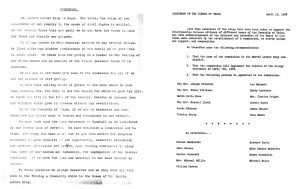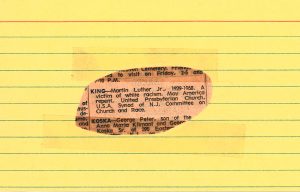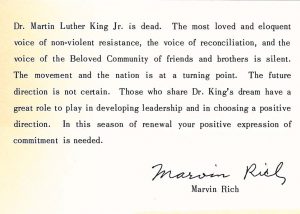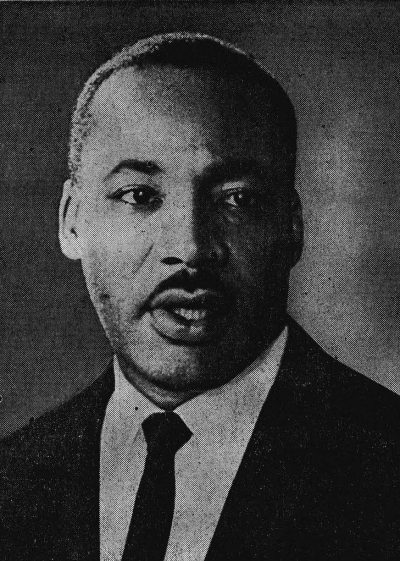REMEMBERING DR. MARTIN LUTHER JR.
January 18, 2021 marks the annual observance of Dr. Martin Luther King Jr. Day in honor of the Civil Rights leader’s life and legacy. This day is one of service, not rest, encouraging all Americans to consider Dr. King’s work and honor his memory by volunteering in their communities. Dr. Martin Luther King Jr. Day became a federally recognized holiday in 1983 when President Ronald Reagan signed a bill into law, though the first official federal observance did not occur until 1986.[1]

In 1964, Dr. King was awarded the Nobel Peace Prize. When notified of his selection, he announced that he would turn over the prize money of $54,123 to the furtherance of the Civil Rights Movement.[2] He was 35 years old at the time, and the youngest man to have received the award to that point. The prize was bestowed upon Dr. King in recognition of his nonviolent campaign against racial segregation. Since 1901 when the first Nobel Prizes were awarded, recipients have been required to present a public lecture.[3] You can hear Dr. King’s Nobel Lecture in Oslo, Norway on December 11, 1964 in the video below. Dr. Clayborne Carson, Director of The King Institute at Stanford University, believes this lecture, which “lays out his goals for the remainder of his life” is one of his most important speeches. In this speech, King addresses the problems of racial injustice, poverty and war as global evils and not a uniquely American problem.[4]

Upon Dr. King’s assassination on April 4, 1968, the Clergy Association of Union (New Jersey) composed a statement which was read at a memorial service for Dr. King. The typed statement, as well as a printed copy from a local newspaper, was preserved by Rev. Nancy Forsberg of the First Congregational Church, where she served as pastor from 1967 until her death in 2000.[5] Like Dr. King, Reverend Nancy – as she was affectionately known by parishioners – was dedicated to interfaith and interracial understanding. She formed an interfaith Bus Ministry which took participants on inspirational day, weekend, and overseas trips in the furtherance of peace and understanding between people of various faiths and backgrounds. The Nancy Forsberg Papers, preserved at The

Department of Archives and Special Collections at Seton Hall University, contains numerous clippings, correspondence and ephemera she collected, including a file dedicated to the subject of Dr. Martin Luther King, Jr., revealing the importance of his work in parallel to her own efforts. Though Rev. Forsberg’s papers date to the late 1960s, they still resonate today and ask us to reconsider her and Dr. King’s efforts for Civil Rights and social justice with a renewed sense of urgency. These materials are available to students, faculty and researchers. For access, set up a research appointment online or contact us at 973-761-9476.

[1] https://www.al.com/news/2018/01/alabama_mississippi_only_2_sta.html, accessed 1/8/2021.
[2] https://www.nobelprize.org/prizes/peace/1964/king/biographical/, accessed 1/8/2021.
[3] https://www.youtube.com/watch?v=u71K76y7jf8, accessed 1/8/2021.
[4]https://kinginstitute.stanford.edu/clayborne-carson, accessed 1/8/2021.
[5] http://www.tributes.com/obituary/show/Nancy-E.-Forsberg-83332540, accessed 1/8/2021.
